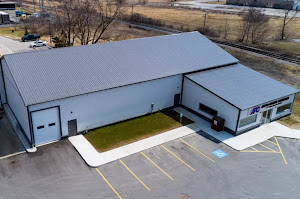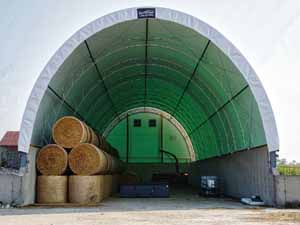Farming has come a long way. A few decades ago, families kept a few animals and grew crops to feed themselves. But that’s not enough anymore. The global population is growing fast. More people mean more food is needed. But traditional farming can’t keep up.
That’s where modern farming comes in. It uses technology, science, and smarter methods to produce more food with less land. It’s not just about feeding people. It’s also about creating jobs, building businesses, and protecting the environment.
Why Traditional Farming Can’t Keep Up?
Traditional farming is slow. It depends on manual labor and outdated methods. It’s also risky. A single bad season can ruin a farmer. That’s not enough for a world with nearly 8 billion people.
The Numbers Don’t Lie
- The global population is expected to reach 9.7 billion by 2050 (United Nations).
- To meet that demand, food production must increase by 70%.
- Traditional farming is responsible for about 24% of global greenhouse gas emissions (FAO).
The Problem with Old Methods
- Low Yield: Traditional methods can’t produce enough food per acre.
- High Labor Costs: More workers are needed, making farming expensive.
- Environmental Damage: Overuse of water, chemical fertilizers, and pesticides harms the land.
Traditional farming also means small farms, local markets, and unpredictable income. Farmers depend on good weather and good harvests. When crops fail, so does their income.
It’s clear: We need a better way.

Modern Farming Methods: Smarter, Faster, Better
Modern farming uses technology to produce more food with fewer resources. It’s efficient, sustainable, and scalable.
Smart Irrigation: Water is one of the most important resources in farming. But it’s often wasted. Smart irrigation systems use sensors to give plants just the right amount of water. This reduces water waste by up to 30% (World Bank).
Precision Agriculture: Farmers can use GPS and satellite data to plan their fields. They can see which areas need more fertilizer, water, or pest control. This saves money and boosts yield.
Vertical Farming: Instead of spreading out, vertical farms grow crops in stacked layers. This is perfect for cities where space is limited. Companies like AeroFarms and Plenty use vertical farming to produce fresh vegetables year-round.
Drones and Automation: Drones can survey fields, monitor crop health, and even spray pesticides. Automated tractors and harvesters reduce labor costs by 50% while increasing productivity.
Hydroponics and Aquaponics: These systems let farmers grow crops without soil. Hydroponics uses nutrient-rich water, while aquaponics combines fish farming and plant growth. Both save space and water.
Organic Farming with a Twist: Organic farming is popular because it avoids harmful chemicals. But modern organic farms use technology too. They use natural pesticides, biological pest control, and crop rotation to keep the soil healthy.
Solar-Powered Farms: Solar panels can power irrigation systems, greenhouses, and even farm machinery. In sunny regions, solar farms can reduce electricity costs by 70%.
Modern Farming Is Also a Business Opportunity
Farming isn’t just about feeding people. It’s also about making money. Modern farming can be a profitable business if done right.
Start Small, Grow Big: You don’t need a massive farm to start. With a few acres and smart methods, you can grow high-value crops like herbs, strawberries, or mushrooms.
Diversify Your Products: Don’t just grow one thing. A small farm can produce eggs, honey, vegetables, and even fish with aquaponics. More products mean more income.
Use Direct Marketing: Modern farmers don’t just sell at local markets. They sell online. They can offer subscription boxes, farm-to-table delivery, or even open an agritourism business.
Agribusiness Is a Job Creator: Modern farming can create jobs. Young people can become farm managers, drone operators, agronomists, or even agri-influencers, sharing farming tips online.
Real-World Example: Kenyan Smart Farms: In Kenya, small-scale farmers are using solar-powered irrigation to grow vegetables year-round. This has increased their income by 40% and reduced water waste.
The Impact on the Environment
Modern farming can be more sustainable than traditional methods. It uses fewer chemicals, less water, and less land.
Saving Water: Smart irrigation and rainwater harvesting reduce water waste. In some areas, farmers use recycled water for crops.
Reducing Chemicals: Precision agriculture means farmers only use pesticides where they’re needed. Some farms use natural pest control like ladybugs instead of chemicals.
Carbon Capture: Modern farms can even fight climate change. Some farms use regenerative methods, like planting cover crops to capture carbon in the soil.
Protecting Biodiversity: Modern farms can grow a wide variety of crops, protecting native plants and animals. They can also leave parts of the land wild to support local wildlife.
Example: Regenerative Farming in Australia: In Australia, regenerative farms use crop rotation, natural fertilizers, and grazing animals to restore soil health. These farms produce high-quality beef, eggs, and vegetables without damaging the environment.

How to Get Started with Modern Farming?
Ready to start your own farm? Here’s how you can begin.
- Choose Your Niche
Do you want to grow vegetables, raise animals, or both? Are you interested in organic farming, vertical farming, or aquaponics? Pick a niche you’re passionate about.
- Start Small
You don’t need a massive farm. Start with a small plot of land and learn as you go.
- Use Smart Tools
Invest in technology. Even a small farm can use smart irrigation, soil sensors, or a drone.
- Sell Directly
Use social media, a website, or a local market to sell your products. If your products are high quality, people will pay for them.
- Monitor Your Reputation
If you sell online, your reputation matters. Negative reviews can hurt your business. If you get unfair or fake reviews, consider removing negative reviews with the help of reputation management services.
- Stay Sustainable
Think about the environment. Use water wisely, avoid harmful chemicals, and protect the soil.
- Keep Learning
Join online farming communities, watch YouTube videos, or take online courses. Modern farming is always changing.
Why Modern Farming Matters for the Future?
Modern farming isn’t just about growing more food. It’s about doing it smarter. It’s about using technology to protect the environment, create jobs, and build a strong economy.
Feeding a Growing World: The world needs more food, but it also needs more efficient, sustainable ways to produce it. Modern farming is the answer.
Fighting Climate Change: Smart farms can reduce greenhouse gas emissions, save water, and protect biodiversity.
Creating Jobs: From drone pilots to hydroponic technicians, modern farming creates high-tech jobs.
Building Stronger Economies: Countries that invest in modern farming can reduce hunger, increase exports, and improve living standards.
Vertical Farming in Singapore: Singapore has invested heavily in vertical farming to reduce its dependence on imported food. Farms like Sky Greens produce fresh vegetables year-round in a small space.
Singapore’s Vertical Farming Revolution: Singapore is a small island nation with limited land and natural resources. For decades, it relied heavily on imported food, with over 90% of its food supply coming from other countries. But as the global population grows and climate change disrupts traditional farming, Singapore knew it needed a better solution.
Investing in Vertical Farming: The Singapore government recognized the potential of vertical farming early on. It offered financial incentives, grants, and research support to companies willing to develop innovative farming solutions. This commitment led to the rise of several high-tech vertical farms across the city-state. One of the most successful is Sky Greens, the world’s first commercial vertical farm. Sky Greens uses a unique rotating tower system where vegetables are grown on tall, stacked shelves. These shelves rotate slowly to ensure each plant gets enough sunlight. This method produces fresh, pesticide-free vegetables with 95% less water and 75% less land than traditional farming.
How Vertical Farming Transforms Food Security: Singapore’s vertical farms don’t just grow lettuce. They produce a wide range of leafy greens, herbs, and even strawberries. And because they are indoors, they can produce food year-round, regardless of the weather. These farms are also highly efficient. LED lights, smart irrigation, and automated systems ensure that crops get exactly what they need without waste. By reducing water use, energy consumption, and chemical fertilizers, these farms are environmentally friendly and highly productive.
Expanding Beyond Singapore: Sky Greens was just the beginning. Inspired by its success, other companies have launched their own vertical farms in Singapore, including Sustenir Agriculture, which grows kale, arugula, and other leafy greens in climate-controlled indoor farms. Singapore’s government has set a goal of producing 30% of its nutritional needs locally by 2030—a plan known as the “30 by 30” initiative. Vertical farming is a big part of this strategy.
The Global Impact of Singapore’s Vertical Farming Model: Singapore’s success has inspired other countries to invest in vertical farming. In the United States, companies like AeroFarms and Plenty are using similar technology to produce fresh greens in urban areas. In the Middle East, Badia Farms has brought vertical farming to the deserts of Dubai, growing herbs and leafy greens without soil. By investing in vertical farming, Singapore has become a global leader in sustainable agriculture. It has proven that even a small, densely populated city can achieve food security with the right technology and planning.

The Future of Farming
Modern farming is more than just technology. It’s a new way of thinking. It’s about producing more food with less waste. It’s about turning small farms into profitable businesses. It’s about feeding the world without destroying the planet.
If you’re thinking about starting a farm, now is the time. Whether you want to grow strawberries on your balcony, raise fish in an aquaponic system, or run a high-tech vertical farm, the tools are at your fingertips.
The future of farming is smart, efficient, and green. Are you ready to be part of it?






